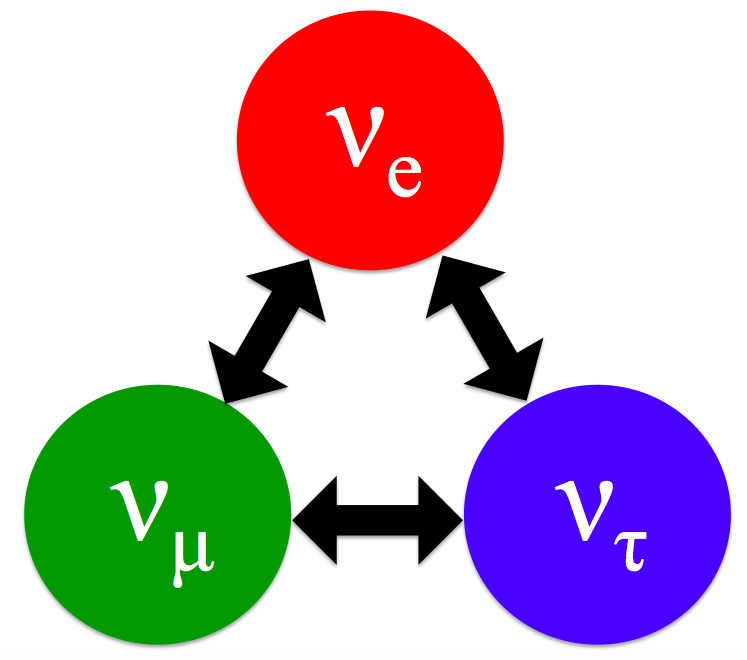The Effects of Neutrino Decay on Oscillation Probabilities
Kayla Leonard, Dr. André de Gouvêa
.
| Abstract | About the Neutrino | Neutrino Decay | Contact |

It is now well accepted that neutrinos oscillate as a quantum mechanical result of a misalignment between their mass-eigenstates and the flavor-eigenstates. In this research, we study the possibility of neutrino decay. This is the idea that there may be new, light states that are currently unknown that the three Standard Model flavors could to decay into. We consider what effects this neutrino decay would have on the observed oscillation probabilities.
We do this in several steps:
(1) begin by calculating the oscillation probabilities under the effects of neutrino decay;
(2) simplify these probabilities using results from experimental data, such as mixing angles and mass differences;
(3) explore what values of the decay parameters are physically allowable, without exceeding a probability of 1;
(4) compare the probabilities in the case of no neutrino decay and in the case of maximum neutrino decay to determine how much of an effect neutrino decay can have on the observed oscillation probabilities;
(5) and discuss the ability of future experiments to detect these differences.
We also examine neutrino decay in the realm of CP invariance, and find that it is a new source of CP violation. Our work indicates that there is a difference between the oscillation probabilities between particle transitions and their corresponding antiparticle transitions. If neutrino decay were proven true, it could be an important factor in understanding leptogenesis and the particle-antiparticle asymmetry present in our Universe.
. Kayla Leonard
. Northwestern REU Student 2015
. Student at University of Texas at Austin